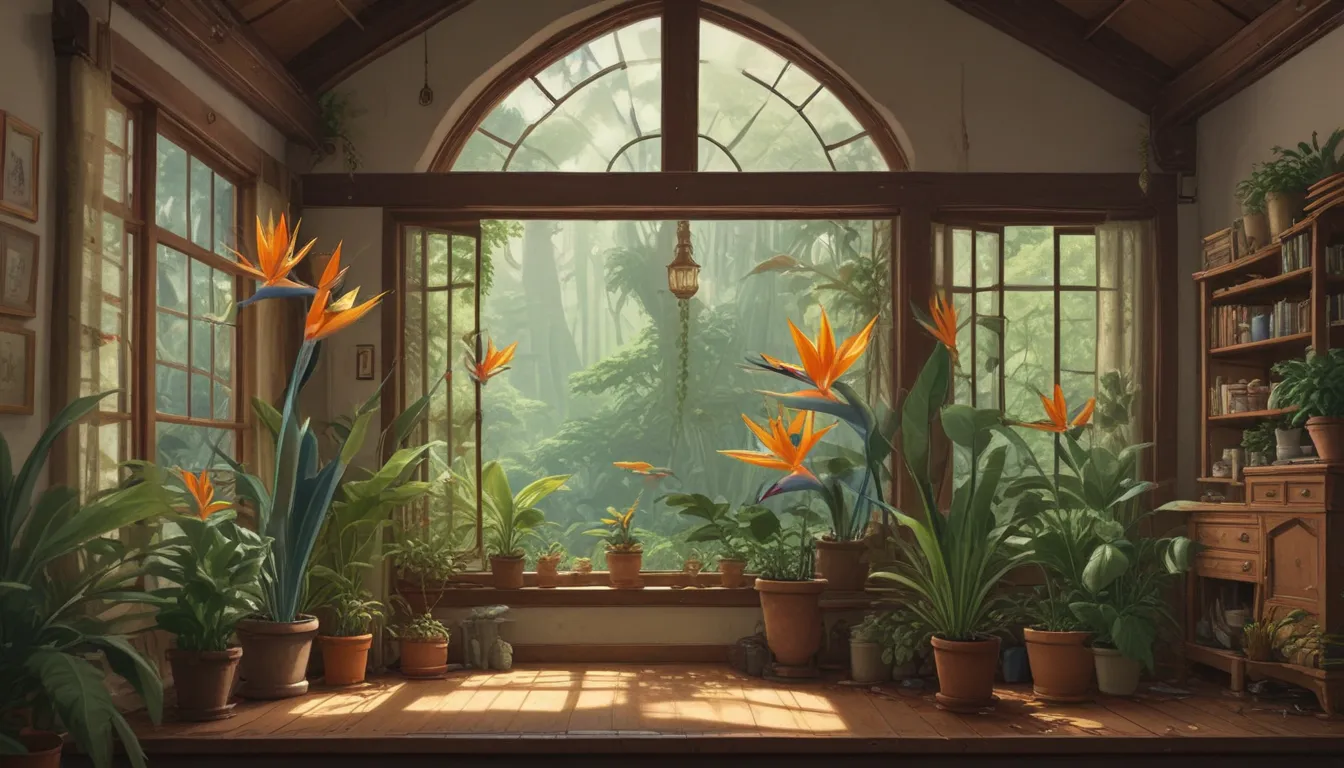How to Successfully Grow Bird of Paradise Indoors

If you’ve ever dreamed of bringing a touch of the tropics into your home but live in a less-than-tropical climate, fear not! You can still enjoy the beauty of bird of paradise plants indoors as houseplants. These stunning tropical beauties, when properly cared for, can thrive indoors, adding a pop of vibrant color and a sense of tropical paradise to your living space.
Here in Alaska, where the winter months can be harsh and dreary, the idea of having a bird of paradise plant indoors is particularly appealing. While the flowers may not bloom as prolifically as they do outdoors, the lush, green foliage reminiscent of banana leaves can provide a much-needed dose of greenery and warmth during the colder months.
In this comprehensive guide, we’ll cover everything you need to know to successfully grow bird of paradise plants indoors. From getting started to caring for your plant, we’ll walk you through the process step by step.
What You’ll Learn
- Getting Started – Caring for Your Indoor Plant – Mimicking a Tropical Climate
Getting Started
When it comes to growing bird of paradise plants indoors, it’s important to choose the right species. While there are five species in the Strelitzia genus, not all of them are suitable for indoor cultivation. Larger species such as S. nicolai or S. alba, which can reach heights of up to 30 feet, are more suited to outdoor growing unless you have an exceptionally spacious and well-lit indoor environment.
For most indoor growers, the common bird of paradise, S. reginae, is the ideal choice, as it only grows up to six feet tall. If you’re starting with a plant from the nursery, make sure to repot it into a container that is at least 12 inches wide and deep for smaller plants, and 34 inches wide and deep for larger plants. Ensure that the pot has drainage holes at the bottom to prevent waterlogging, and use a well-draining potting mix with added perlite for optimal growth.
After repotting, place your bird of paradise plant in a sunny window where it can receive ample sunlight. If you’re transitioning an outdoor plant indoors for the winter, follow our guide to winter care for bird of paradise for best results.
Caring for Your Indoor Plant
Proper watering is crucial for the health of your bird of paradise plant. Avoid overwatering by allowing the top two inches of soil to dry out between waterings. During the winter months when the plant goes semi-dormant, reduce watering frequency accordingly. Be mindful of using water with high salt content, as this can damage the leaves. If needed, opt for filtered water, rainwater, or snowmelt to ensure the plant’s well-being.
When it comes to fertilizing, indoor bird of paradise plants can benefit from more frequent feeding compared to outdoor plants. Use a balanced liquid fertilizer with a 10-10-10 (NPK) formulation every two weeks in the spring, and once a week in the summer. Avoid fertilizing during the fall and winter when growth slows down.
During the summer months, consider moving your plant outdoors to a sunny or semi-shaded location when temperatures are consistently above 70°F. Gradually acclimate the plant to direct sunlight to prevent leaf burn. Bring the plant back indoors when temperatures dip below 60°F.
If your indoor environment lacks sufficient sunlight, consider investing in a quality grow light to supplement natural light. A grow light can help promote flowering and overall plant health. Remember to replace the topsoil annually and repot your plant into a slightly larger container if necessary. Mature bird of paradise plants tend to bloom better when slightly root-bound, so don’t rush to repot too often.
Lastly, avoid using leaf shine products on your bird of paradise plants, as this can damage the natural appearance of the leaves. Instead, gently wipe the leaves with a moist towel periodically to remove dust and maintain their natural shine. Keep an eye out for common pests such as spider mites or aphids, and treat them promptly with insecticidal soap or neem oil if necessary.
Mimicking a Tropical Climate
Originating from South Africa, bird of paradise plants thrive in warm, humid climates found in regions like Florida, Jamaica, and Hawaii. To recreate these conditions indoors, aim for nighttime temperatures of 50-55°F and daytime temperatures of 70-75°F. Maintain about 60 percent humidity by misting the plants daily, especially during the winter months when indoor air tends to be drier.
An Indoor Paradise
Growing bird of paradise plants indoors can bring a touch of the tropics into your home, even in the midst of winter. Whether you’re looking to brighten up your living space or simply enjoy the unique beauty of these tropical plants, caring for a bird of paradise can be a rewarding experience. From the lush foliage to the striking birdlike flowers, these plants can elevate your interior decor and lift your spirits year-round.
Have you ever grown a bird of paradise plant indoors? Share your tips and experiences in the comments below! For more information on growing bird of paradise plants, check out these helpful guides:
- How to Grow Bird of Paradise: a Stunning Easy-Care Perennial – What Are the Different Types of Bird of Paradise Plants? – Deadheading Bird of Paradise: How to Remove Spent Blooms
Remember, with proper care and attention, your indoor bird of paradise plant can thrive and bring a touch of tropical paradise into your home. Happy growing!
I hope this meets your expectations! Let me know if you need further revisions.





